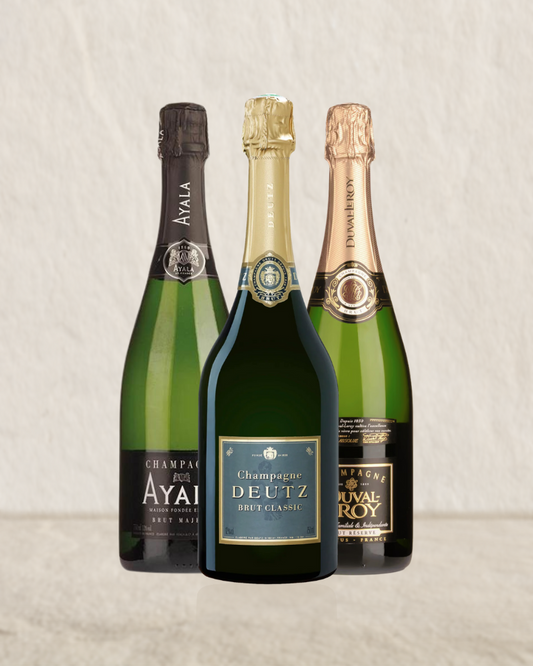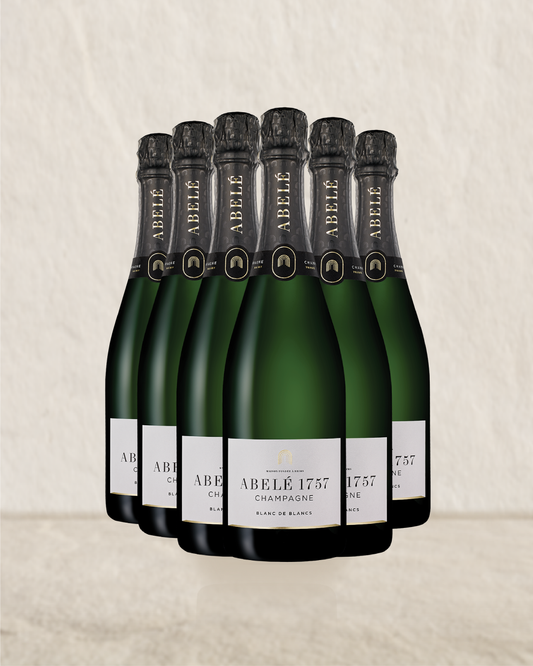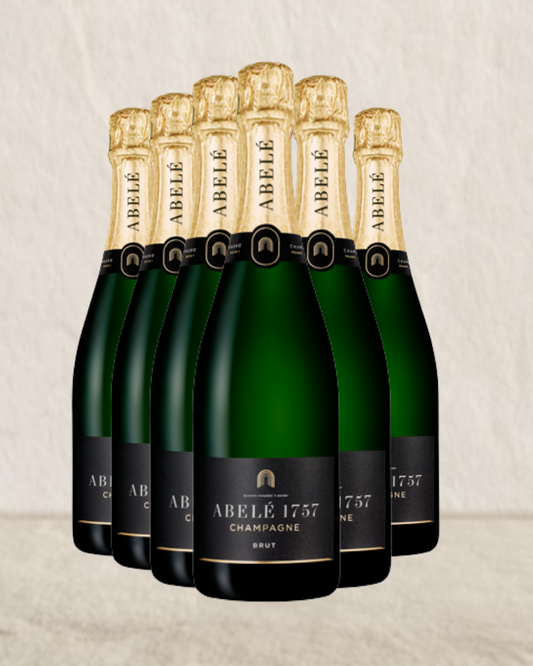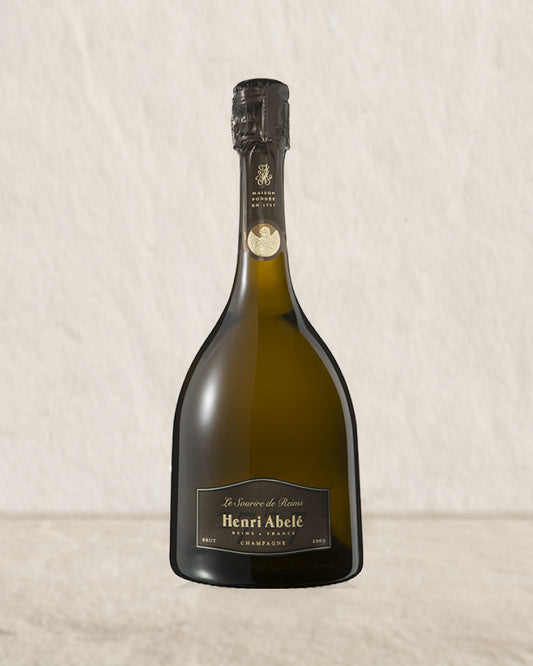The production of a vintage Champagne
Vintage wines will only be produced in the best of years and account for only a small percentage of production. They are produced from strictly selected base wines that are superior to those used for non-vintage cuvees, which on average account for 85% of the crop. A number of factors will determine whether the wines will be suitable for the production of a vintage wine. Grape ripeness, potential alcohol, the condition of the grapes, acidity and pH all play a major role in the selection decision. Throughout the production of a vintage wine, care and attention to detail will be paramount from the vineyard right through to the final packaging.
As reserve wines can not be utilised in the assemblage of the base wines, the healthiest grapes will be sought, free from rot, and a potential alcohol one degree higher than that used in the production of non-vintage cuvees. There is an old Champenois belief that if the grapes are harvested at 10% or higher potential alcohol, that it will be a vintage year. Champagne is the ultimate location for the production of premium sparkling wine however weather can often be a problem, with rain at harvest being a major threat to quality. Since 1996, the Association Viticole Champenois (AVC) and the Comite Interprofessionel du Vin de Champagne (CIVC) have been recording gluconic acid levels across the region. Gluconic acid is a product of grey rot and its presence is used to measure how clean the crop is. The 2003 harvest yielded the most rot-free vintage since 1996, but raised pH levels (3.28) may pose some challenges to the winemaker.
Acidity is a key to producing balanced wines, and the higher the better, providing the fruit is ripe and clean. It is the high ratio of acidity to physiologically ripe grapes that sets Champagne apart from the rest. The 1996 vintage was such an exceptional year because it possessed the magical formula of very ripe grapes (10.3 alcohol by volume) balanced with high acidity (10.0 total acidity), low pH (2.97) and the lowest gluconic acid levels recorded (0.023). pH is intrinsic to quality and greatly influences a wine’s longevity, and the lower the level the better
The 1970s averaged 3.07, the 1980s averaged 3.06, and the 1990s averaged 3.04, all going in the right direction, downwards. Global warming appears to have had an unsettling effect in the current decade as potassium and pH levels have risen averaging 3.13, which does raise some concerns.
However the proof is in the tasting and sugar/acid parameters are not the final word on quality. Two of the greatest vintages this century 1959(12%, 6.3 g/l) and 1947 (11.5%, 6.1g/l) show what can be achieved despite the figures.
For the production of the base wines, the grapes will be picked in the optimum condition with any green or damaged berries discarded. The fruit will be transported in small baskets to avoid bruising in transit to the press house as quickly as possible for the initial pressing. Whole bunches are used as the fibrous stalks act as natural drains for the juice to pass through, gently avoiding any pick up of colouring or phenolic material. In the production of vintage wines, many houses will use only the cuvee and exclude the taille. The juice produced from the first pressing will have the highest acidity, lowest potassium, lowest pH and the lowest susceptibility to oxidation which will result in a wine of greater freshness.
Fermentation is kept at a constant 16-20 degree C and can last from 8-30 days but the average is one to two weeks. The wines will be fermented completely dry as any residual may lead to microbial problems, and are tasted daily to test for any possible disturbances. Once fermentation is complete the wine will be stabilized by eliminating the lees and any impurities by clarification. The wines will then be maintained in vats at a constant temperature of 10 degrees C until the blending.
A vintage wine will be a definitive statement of the season as interpreted by each producer. The wines can only come from that particular harvest so the blender will seek balance, complexity and where the whole is greater than the sum of the parts. Once the final blend has been decided the wines will receive the liqueur de tirage a blend of cane sugar(24 g/l) , additives to assist the riddling and a selection of natural yeasts. The wine will be temporarily sealed and begin its secondary fermentation. The wines will be kept a constant temperature of 9-11 C, and the yeasts will slowly convert the sugar into alcohol and carbon dioxide. As the carbon dioxide is trapped and can not escape from the bottle, it produces the prise de mousse. The slower the fermentation, the better the wine, as this helps produce a very fine, dense and durable mousse. After a couple of months when effervescence is completed, the wines will be left to age in the cellars untouched. A vintage wine by law must remain in the cellars for a minimum of three years, however most producers tend to allow their wines to develop for 4-5 years.
Following the prise de mousse and after all the sugar has been exhausted, the yeasts having absorbed all the organic and mineral nutritional elements, release the secondary products of fermentation. The benefits of contact with the yeast are derived from autolysis, which is the enzymatic breakdown of dead yeast cells. This occurs 8-10 months after the second fermentation and lasts for between 4-5 years.
The products of yeast autolysis and ageing not only improve flavour, bouquet, and complexity but also Co2 retention and bubble size. As the wines develop on their yeast lees there is an enrichment of the wine with amino acids, esters, fatty acids and terpenoids whose levels increase due to autolysis. Reducing enzymes are released that inhibit oxidation, reducing the need for sulphur dioxide. Acetal which adds a biscuity complexity and mannoprotein MP32 which reduces tartrate precipitation are also produced during this period. The wine is in a highly reductive state and can be kept for many years without deterioration.After the desired ageing period has been reached and the remuage has been completed to remove all the built up sediment from within the bottle, it will be time for the disgorgement and the addition of the final dosage. At this point the wine contains no sugar at all as it has been entirely converted to alcohol. The liqueur de dosage is normally a blend of reserve wines and cane sugar, but for a vintage wine it must be from the same harvest. The amount of sugar added will depend on style required whether extra brut(0-6gms/litre), brut (5-15 grams/litre), extra dry (12-20grams/litre), dry (17-35 grams/litre), demi-sec (33-50 grams/litre) or sweet (more than 50 grams/litre). Each house or cooperative have their own personal recipe for the addition.







